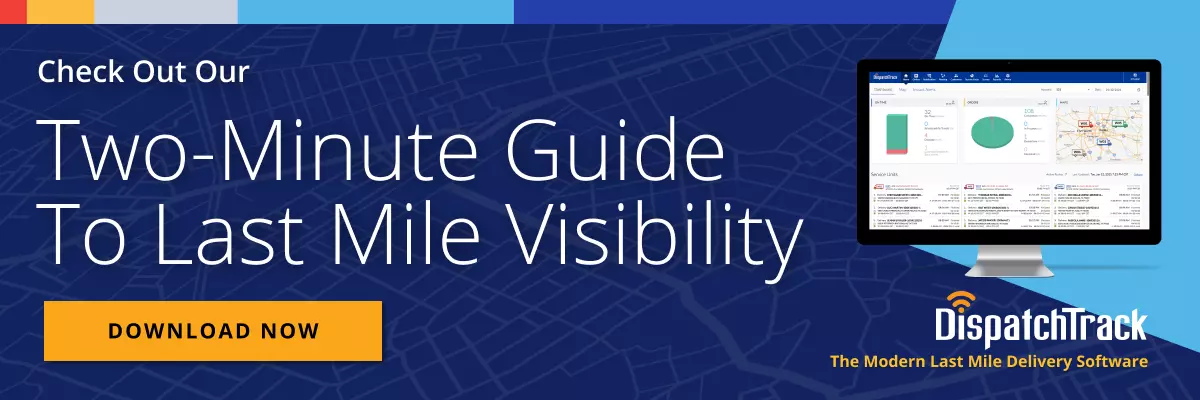If you’re in the last mile delivery game, it’s almost never too early to start thinking about the holidays—and this year’s no different. Between ongoing concerns about inflation to the driver shortage that’s been plaguing delivery organizations for years now, 2022’s upcoming holiday is already a fraught subject for retailers and distributors.

How do we know? Because we asked them. We polled more than 100 logistics professionals about how they’re prepping for the holidays for our 2022 Last Mile Holiday Perspective, and their answers painted a striking picture of what’s coming down the pike in the next few months for delivery organizations.
More than 90% of businesses expect operating costs to spike—and that’s before we even factor in rising fuel prices. Nearly three quarters of businesses expect to raise prices because of a combination of fuel and inflation. And more than 80% are worried about delivering on-time (most of those respondents are just as concerned as they were last year, or more so).
Contrary to reports over oversupply, there’s also a large amount of anxiety about inventory levels, with nearly two-thirds of businesses indicating that they were concerned about shortages. In short, the average delivery organization is in a complex position—they’re operating at a higher difficulty level than in the past, and it’s more important than ever to ensure that the tools, plans, and processes that are in place to handle surges in delivery volumes are actually set up to power successful deliveries.
Why Forecasting Holiday Plans Is a Challenge
In our recent report, one of the most overarching themes was uncertainty:
- 33% of businesses expected revenue to increase this holiday season; 32% expected it to decrease; and another quarter weren’t sure what to expect.
- Some of the concerns that survey respondents cited around the upcoming season were delays beyond their control (37%), unpredictability (20%), and unknowns (15).
- Only a third of businesses were prepared to handle the business impacts of another potential COVID wave.
And it’s not hard to imagine why that would be the case. There are a ton of variables that go into successful, cost-effective delivery operations, and many of them are beyond the delivery organization’s control. Will there be enough drivers available to handle demand levels? Will fuel costs make some deliveries prohibitively expensive? Will traffic and weather cause day-to-day delivery disruptions? Will the inventory you want to move even make its way through the supply chain in time?
There’s no magic bullet that can help businesses deal with all that uncertainty—but there are ways to ensure that you make optimal use of the things you can control. This might include how you utilize your delivery capacity, how you plan your routes, how you engage with customers, and how you respond to disruptions when they arise. There’s no way to completely eliminate the element of chance and the risks that come with it, but you can create delivery plans that are agile and flexible enough to weather the unexpected.
Tactics for Fighting Inflation (and the Driver Shortage)
Of course, not all of the challenges that are going to face delivery organizations are mired in uncertainty. There’s very little ambiguity about the fact that driver shortages are going to continue having an impact on the industry—64% of respondents are just as concerned or more concerned about driver shortages this year compared to last.
Likewise, fuel costs and inflation are absolutely going to present challenges: 50% of businesses listed inflation as top concern for this year, and 80% said that they were uneasy with fuel costs. All told, more than 90% of businesses expected operating costs to be higher this year than last year, even before fuel costs are factored in.
So what’s the best way for businesses to tackle these rising costs and grapple with a shortage of available delivery drivers? There are a few tactics that you can employ:
- Drive fewer miles: Sure, this is easier said than done—but when you can complete your deliveries more efficiently, you can potentially complete more deliveries per route. This helps with driver shortages, since it enables you to get more out of your existing driver capacity. But it also impacts costs: since fuel and labor are typically two of the biggest expenses when it comes to delivery management, decreasing both by driving fewer miles can have a big impact.
- Keep customers in the loop: There’s a lot of areas where last mile deliveries really are unpredictable—but whether the customer is going to be home to receive the delivery doesn’t have to be one of them. If you can keep customers informed with texts and emails at every stage of the process and give them the ability to track their orders in real time from the comfort of their own devices, they’re significantly less likely not to be home when the truck arrives. If you offer two-way communication to enable them to contact you about any potential issues with the ETA, that number drops even further. The result is that you greatly decrease redelivery attempts—and all the costs that come with them.
- Ensure real-time last mile visibility: Visibility often comes across as a nebulous concept, rather than a concrete way to tackle rising costs. But in point of fact, real-time last mile visibility can be leveraged into real cost reductions if you take the right approach. For instance, if you can spot potential late deliveries in real time and then call your customers to reschedule, you can potentially avoid the costs that come with redelivery. In general, visibility gives you the tools to be proactive on the day of delivery, thereby smoothing out the entire process, reducing labor costs, and even potentially reducing your inventory costs.
Will Sustainability Play a Role in Deliveries This Holiday Season?
One of the other themes that DispatchTrack’s 2022 Last Mile Holiday Perspective explored was the growing importance of sustainability for delivery organizations. We found that, all told, 7 in 10 businesses were already prioritizing sustainability or planning to do so soon—including 23% who were already prioritizing it and 47% who are planning to do so in the coming year. Interestingly, however, most of those businesses (85%) didn’t anticipate leveraging electric vehicles as part of that strategy in the near future.
This leaves us with an important question: what strategies can delivery organizations utilize to increase sustainability and enable green logistics without electrifying their fleets?
Many of the most powerful approaches are the same ones we discussed above for cutting costs. CO2 emissions in delivery are a direct function of fuel consumption, which obviously comes from miles driven and minutes idled. That means that any time you can drive fewer miles, e.g. by using AI-powered route optimization to ensure that you’re taking the most efficient possible routes, you can make a real impact on your net emissions. By the same token, reducing the need for redelivery attempts also reduces emissions.
Here, one of the keys for businesses going forward is going to be carbon tracking and visibility. When your platform gives you the ability to visualize the CO2 impact of your various delivery runs and routing/planning decisions, you can take a data-driven approach to getting greener. No doubt, this will continue to be a critical goal even once the uncertainty of this upcoming holiday season has come and gone.
